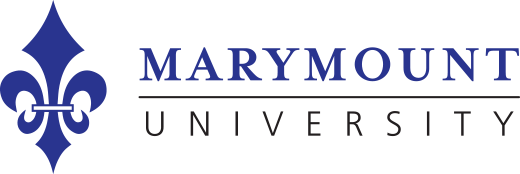What Are the Biggest Issues Facing Nurses Today?

The COVID-19 pandemic has had significant, lasting impacts on the healthcare industry, with nursing being at the forefront. During the crisis, the critical role nurses play as experts, leaders, and decision-makers in healthcare was at the forefront of the public consciousness. Infection control, preventative care, and patient education went from primarily a nursing issue to having a widespread, daily impact on the lives of the general public.
The outlook for nurses is positive, with solid growth projected over the next ten years, with over 193,000 job openings for nurses projected this year alone. However, the landscape is changing drastically, and nurses need to keep up with rapid advancements in health care policy. For example, the widespread adoption of telehealth innovations has changed the way patient care is delivered, and questions about the role artificial intelligence will continue to play in healthcare are just starting to be explored.
Let’s go over some of the challenges nurses face in today’s healthcare landscape.
1. Staffing shortages
Even before the height of the pandemic, some areas of the United States were already experiencing a nursing shortage. The aging population of baby boomers requires more healthcare services, leading to an uptick in demand for nurses. Rural and underserved areas, in particular, struggled to attract and retain enough nurses.
After the pandemic, this issue became more widespread. Older nurses already approaching retirement age decided to exit the workforce earlier than planned due to burnout, fatigue, and concerns over their exposure to the virus. Some nursing education programs were disrupted or delayed, which led to fewer new nurses entering the field. One report found that the number of nurses in the field may have dropped by as much as 100,000 between 2020 and 2021.
When a hospital can’t maintain safe staffing levels, the nurses who still work there sometimes have to carry the additional workload. This can perpetuate the cycle of staff turnover as nurses who are overworked and tired won’t feel supported or capable of offering a high standard of patient care.
The good news is that these staffing shortages are starting to turn a corner. Hospitals and other providers are using retention strategies that acknowledge the high value of nurses. Nurses, even at the entry-level, are being offered better employee benefits, higher wages, and flexible scheduling options.
2. Increased support for nurses
Brave and compassionate nurses continued to show up to do their jobs and help their patients, even when a highly contagious and quickly mutating virus was present every day in their workspace. Over time, the stress of pandemic patient care took a toll. Rates of depression and anxiety for nurses started to rise.
The public’s gratitude and enthusiastic appreciation for nurses put a spotlight on some of the unique issues in nursing, including caregiver burnout, a lack of mental health support, and challenging working conditions. Efforts are now being made to reduce mandatory overtime hours, ensure healthy staffing levels, and promote a healthy work-life balance. Employers that offer counseling services, peer support groups, workplace safety initiatives, and resilience training are becoming increasingly the norm.
There have also been efforts to increase nurses’ access to professional development opportunities and career advancement. A culture of leadership, action, and support is taking root, and mentorship programs are popping up in many workplaces to help nurses thrive.
3. Technological innovations
When social distancing restrictions made it difficult to provide care during the pandemic, the widespread adoption of telehealth accelerated as a natural next step for doctors and nurses. Telehealth has since rocked the world of healthcare, changing the way that nurses provide care to patients. At the same time, remote monitoring devices for patients (more often called “wearables”) have become more accurate and affordable for tracking markers like heart rate and rhythm and glucose levels.
Telehealth allows healthcare professionals to reach patients in remote or underserved areas, increasing access. It also reduces the burden of travel time and, in some cases, administrative work for nurses. Nurses can monitor patients remotely and provide patient education through telehealth platforms. Some nursing jobs can now be performed completely from home—something that would have been unheard of even a few decades ago.
Some nurses who have been in the field for many years have found it challenging to adapt to this new era of healthcare, while a large majority of experienced staff have transitioned to the less physically demanding remote care roles and have extended their professional careers in an impactful way. It isn’t just a change in delivery methods but truly a mindset shift. Nurses who are beginning their nursing careers are being trained in these technologies and care delivery methods in nursing school. They are having conversations about these innovations regularly with faculty and other students. What some might have seen as a challenging adjustment will simply be the norm for these nurses as they enter the workforce.
4. Policy changes in healthcare
With significant changes in healthcare infrastructure—and even more on the horizon—legislative policies and industry best practices are also evolving.
The Center for Disease Prevention and Control (CDC) drives new guidelines and policy changes. New mandates for infection control in the healthcare setting, personal protective equipment (PPE) use and availability, and protocols for handling infectious diseases have all taken hold in nurse’s workplaces. New legislation regarding Electronic Health Records (EHRs) has made accessing patient histories and providing comprehensive patient care easier. Still, it has also introduced a host of new rules and regulations that nurses must understand to comply.
Changing policies in continuing education are also impacting how nurses plan their careers. Many jurisdictions require nurses to continue their professional development with mandatory training and educational seminars on new technologies and cultural competence. Some seasoned nurses who do not have a Bachelor of Science in Nursing (BSN) are expected to obtain one as a condition of their continued employment, and the American Association of Colleges of Nursing continues to push to meet the goal of a nursing workforce that is 80% baccalaureate-prepared—a goal they say would enhance patient safety.
Launch your second career as a nurse
If you are compassionate and you’re up for a fulfilling and challenging career with plenty of opportunities available, nursing could be a perfect fit for you. Nurses with a bachelor’s degree in a non-nursing field can build on that foundation with Marymount University Online’s accelerated Bachelor of Science degree in Nursing (ABSN)—a rigorous, fully accredited degree that takes 16 months to complete and will jumpstart your nursing career.
Marymount University has been a national nursing education leader for over 50 years. Nestled among influential organizations and healthcare providers, you get the benefits of Washington, D.C. with the flexibility of online coursework. Learn from the epicenter of healthcare policy and advocacy with Marymount University Online.
